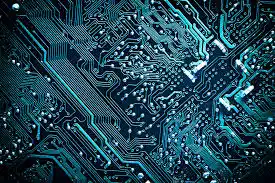The Synergy Between Technology and Augmented Human Abilities

A groundbreaking phenomenon is reshaping the way we perceive human capabilities.
Augmented human abilities, facilitated by advanced technologies, are revolutionizing various aspects of our lives.
From enhancing physical prowess to expanding cognitive capacities, the fusion of technology and human potential is opening doors to a future where biological limitations no longer confine our abilities.
Let’s explore the relationship between Technology and Augmented Human Abilities
1. Bionic Limbs and Exoskeletons
One of the most remarkable advancements in technology is the development of bionic limbs and exoskeletons.
These innovative devices enhance mobility for individuals with limb disabilities, offering them unprecedented freedom of movement and independence.
2. Brain-Computer Interfaces (BCIs)
BCIs establish a direct link between the human brain and external devices, enabling control of computers, prosthetics, and applications through brain signals.
This technology holds immense potential for individuals with spinal cord injuries and neurodegenerative disorders.
3. Sensory Augmentation
Technology has paved the way for sensory augmentation devices, allowing individuals with visual or hearing impairments to perceive the world in new ways.
Devices like cochlear implants and retinal implants restore or enhance sensory functions, significantly improving quality of life.
4. Cognitive Enhancement
Cognitive enhancement technologies, including neurostimulation and smart drugs, aim to boost memory, attention, and problem-solving abilities.
While still in the experimental stage, these innovations offer a glimpse into the future of amplified human intelligence.
5. Biomechanical Enhancements
Biomechanical enhancements involve integrating machines with the human body to augment physical capabilities.
This includes powered exoskeletons that enhance strength and endurance, blurring the line between human and machine in fields like industry and healthcare.
6. Enhanced Perception through Augmented Reality
Augmented Reality (AR) overlays digital information onto the real world, enhancing perception and providing valuable insights. In fields like medicine and engineering, AR applications assist professionals by providing real-time data and visualizations, improving decision-making processes.
7. Enhanced Communication
Technology has revolutionized communication for individuals with speech or communication disorders. Augmentative and Alternative Communication (AAC) devices, coupled with predictive text algorithms and voice synthesis, empower people to express themselves more effectively.
8. Innovations in Neural Prosthetics
Neural prosthetics involve implanting devices directly into the nervous system to restore or enhance function. These prosthetics offer hope to individuals with paralysis, allowing them to regain movement and control over their bodies.
9. Human-AI Collaboration
Augmented human abilities are further amplified through collaboration with Artificial Intelligence (AI). AI systems analyze vast datasets and provide insights that augment human decision-making processes in fields like healthcare, research, and finance.
10. Ethical Considerations
The integration of technology with human abilities raises ethical questions concerning consent, privacy, and the potential divide between augmented and non-augmented individuals.
Striking a balance between innovation and ethical considerations is crucial for a responsible and inclusive future.
FAQs
How safe are augmented human abilities technologies, and do they have any side effects?
Augmented human abilities technologies undergo rigorous testing to ensure safety. While side effects are possible, they are generally minimal and vary depending on the specific technology and individual factors.
Can anyone get augmented human abilities, or are they limited to specific medical conditions?
Augmented human abilities technologies are diverse and cater to various needs. While some applications address medical conditions, others focus on enhancing abilities. Accessibility depends on the specific technology and its intended purpose, often requiring medical evaluation and consent.
What are the societal implications of widespread adoption of augmented human abilities?
Widespread adoption raises societal questions about accessibility, equality, and the potential divide between augmented and non-augmented individuals. Ethical frameworks and regulations are essential to address these concerns and ensure inclusive access to augmented abilities.
How do augmented human abilities impact the job market and employment opportunities?
Augmented human abilities create new job opportunities in fields like technology development, healthcare, and assistive services. However, they also raise questions about job displacement and the need for retraining the workforce. Adaptable education and training programs are crucial for navigating these changes.
Also Read: Harnessing Technology for Wildlife Conservation




